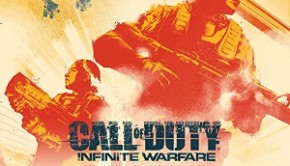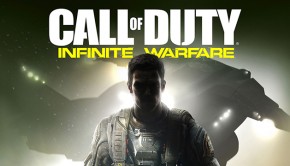Sean Murray Interview: The Music of Black Ops
Sean Murray is a veteran composer for films and television, who has recently entered the video games industry. He is best known for scoring the best-selling game Call of Duty: Black Ops and various seasons of Buffy the Vampire Slayer.
In this interview, Murray details his scores for the True Crime and Call of Duty series, including the newly released Black Ops. He discusses how he still aims to be innovative, despite the lofty expectations of war scores. He also recollects some of the highlights of his television and film career.
Interview Credits
Interview Subject: Sean Murray
Interviewer: Chris Greening
Editor: Chris Greening
Coordination: Greg O’Connor-Read
Interview Content
Chris: Sean Murray, we appreciate the opportunity to talk to you today. Coming from a dynasty of actors, what inspired your decision to pursue music for visual media? How did you achieve your big break as a professional composer following your studies at the Brooks Institute Film School?
Sean Murray: When I was 10 years old, my father directed a film called Damien’s Island and hired first time composer Brad Fiedel, now of Terminator fame. When I heard the score I was taken by the themes and inspired. That’s when I knew I wanted to be a film composer.
To achieve this, I attended the Brooks Institute Film School and scored a lot of student films there. My first feature film was an action film called Scorpion when I was 19 years old. Looking back now, I actually remember going to see it at the theatre near my house.

Chris: After achieving success as a film composer with a string of subsequent works, you made your debut as a video game composer creating cinematic music for True Crime: Streets of LA and its sequel. Were there many significant differences scoring these projects compared to feature films from a musical or technical standpoint?
Sean Murray: True Crime: Streets of LA was scored similarly to a film because the music I wrote was for cut scenes. In fact, I approached it exactly as I would a film score.
The biggest difference was the time line. A feature film is typically delivered in its final edited version, at which point I get four to six weeks to write the score. With True Crime: Streets of LA, however, I was given individual cinematics as they became ready, so the entire project took several months to complete.
True Crime: New York City was different because it involved gameplay. Because I was writing to video capture, it was similar to working on a film but it entailed fewer points to hit and required that sections of music had to easily transition from one level of intensity to the next.
Chris: The True Crime titles featured a distinctive image and attitude. How did you complement the respective urban settings of these games with your music? Did you introduce any features to maintain continuity with the licensed hip-hop music featured on these titles?
Sean Murray: True Crime: Streets of LA was scored as a crime drama using orchestral elements and hip hop beats. In contrast, True Crime: New York City took on a darker techno texture while keeping the big themes of an orchestral score.
One of my favourite scenes in New York City was a shoot out in an opera house so I had to write an operatic piece. My father is fluent in Italian, so I asked him to write some lyrics to go with the melody I had created — he wrote a story of a man on an adventure to find a better world. I hired a wonderful opera singer named Jane Runnalls (who is the voice in my Call of Duty scores). What a great way to combine classical and modern music styles!

Chris: Through your collaboration with Brian Tuey on the True Crime titles, you were recruited to work on Call of Duty: World of War. Could you outline how you depicted the Pacific and Eastern theatres of operation on this hit first-person shooter? Was your approach influenced by consumer’s expectations of World War II scores?
Sean Murray: On Call of Duty: World at War, I started by creating the bombastic American orchestral themes, but I always knew I wanted to stretch the sound palette to be more modern and edgy. To achieve this, I incorporated electronica and heavy guitars mixed in with traditional orchestral sounds.
In terms of depicting the Pacific Theatre, my goal was to show how different it was, from the American perspective, to fight an enemy like the Japanese. America had never seen such brutal jungle warfare in its history and I wanted to take the player to a distant and alien world. The Eastern Theatre was cold, psychological, disturbing, and strenuous. I wanted the player to feel the coldness of winter in a collapsing Berlin.
That said, the game itself made it very clear that you were in World War II, so I didn’t want the music to keep reiterating what you were already seeing. I wanted it to be more about the experience than the time period.
Chris: In the last year, you reunited with Treyarch to score Call of Duty: Black Ops. How would you compare and contrast your score for this title with that for Call of Duty: World at War? Was the shift from World War II to the Cold War influence your shift in direction?
Sean Murray: Call of Duty: Black Ops was a darker and grittier score that was far more psychologically driven than Call of Duty: World at War. In preparation, I immersed myself in Cold War music from Hungarian composers like Kurtag and Ligeti and American composers like Lazarof and Druckman. The tone was mysterious and clandestine and had to be close to the vest.
The themes were centered more on the mental states of the main characters, Mason the American and Reznov the Russian. The reintroduction of Reznov actually allowed me to continue to build on some of the big Russian themes from World at War.

Chris: You recorded both of your scores for the Call of Duty series with full orchestra. What do you feel their performances brought to the overall experience? Were you closely involved with the score preparation and recording sessions?
Sean Murray: For World at War, we recorded in Prague, which was beneficial because the musicians and choral singers in that country were able to understand and interpret the heavily Eastern European influenced music. Black Ops was recorded at Warner Brothers with the best Hollywood players.
Yes, it was a thrill to record with both orchestras. I was heavily involved with everything from preparation to recording and mixing.
Chris: The audiophiles among our audience would be interested to learn what technology you used to produce the score for Call of Duty: Black Ops. Could you elaborate on your studio set-up? How did you meet the technical challenges of hybridising orchestral recordings with electronic and sampled components?
Sean Murray: My studio utilizes both cutting edge as well as vintage technology. I use a PC running Sonar X1 as my recording and midi computer, with all the plug-in synths you could want. I have three dedicated PCs running editions of GigaStudio and a Mac running Pro Tools for master mixes in 5.1 stems.
My vintage 80s synths include a Emulator II, Roland D-50, Korg M1, Yahmaha DX’s, a couple of Kurzweil K2500s… well, and a bunch more. I love the old outboard gear because of the warm and gravity they bring to the sound. I often bring back the orchestral recording stems into Sonar X1 to further manipulate the overall cue.
Chris: Aside the Call of Duty franchise, you’re best known for offering music to various episodes ofBuffy the Vampire Slayer. Could you discuss your contributions to this franchise? Was it a satisfying experience to contribute to this series and were there any limitations on your freedom?

Sean Murray: Buffy was great, because I came in on the second season of a hit show. I was able to write some wonderfully devilish music mixed with some hauntingly beautiful themes and I felt very encouraged to experiment to help form a new musical direction for the show.
Chris: You were also responsible for scoring the controversial show God, The Devil and Bob. Now a decade on, how do you feel about the project and its premature cancellation?W as it a worthwhile gig or do you regret your involvement?
Sean Murray: God, The Devil and Bob was one of my favorite shows to score. I was still writing gothic horror cues like in Buffy, but was able to mix them with whacky little comedy cues. It was a total mash up! The producers were a joy to work with as well.
I was amused at the controversy, which was mainly driven by the fact that God was depicted as a lovable beer drinking hippie. I was not surprised religious groups were offended.
Chris: Beyond your television and video game works, you have scored numerous feature films during the last decade. If you had to pick three film projects that have been particularly significant to you, what would they be and why?
Sean Murray: I’d say Ocean Tribe, Firetrap, and Stevie. Ocean Tribe was a moving story about a young surfer dying of cancer. His friends take him for that one last surf trip down to Mexico. The score was very intimate and very guitar driven.
Released over a decade ago now, Firetrap was my first big action type of score, where big themes were a big deal. Every cue had to be grander than the last!
Stevie had some wonderful acting from Catherine McCormack (Braveheart) and Jodi Molla. It is a ghost story with a very sad and delicate theme. It was a challenge to be gentle and terrifying at the same time.

Chris: To finish, Call of Duty: Black Ops appealed to over 20 million customers and generated over a billion in sales. How does it feel to know your music has impacted on so many people? Have these experiences made you consider focusing more on video games in the future? Thank you and best wishes for the future.
Sean Murray: It has been the most incredible experience this last year working on Black Ops. From the Staples Center E3 concert, where my orchestra played live to the game followed by Eminem on stage with over 12,000 in attendance, to recording an 80 piece orchestra at the Eastwood Scoring Stage at Warner Brothers, it is hard to imagine a more exciting list of events. Wrapping it up with a billion dollar hit is just icing on the cake.
I have to thank my friends at Treyarch for having me back for a second round. The many fans that I have met of all ages have made me proud to be part of an experience that brings so many people so much excitement. I can’t wait for my next project. Game or film, I love it all.
Many thanks to Greg O’Connor Read for coordinating this interview. Learn more about Sean Murray at his official website.
Posted on February 11, 2011 by Chris Greening. Last modified on March 2, 2014.














